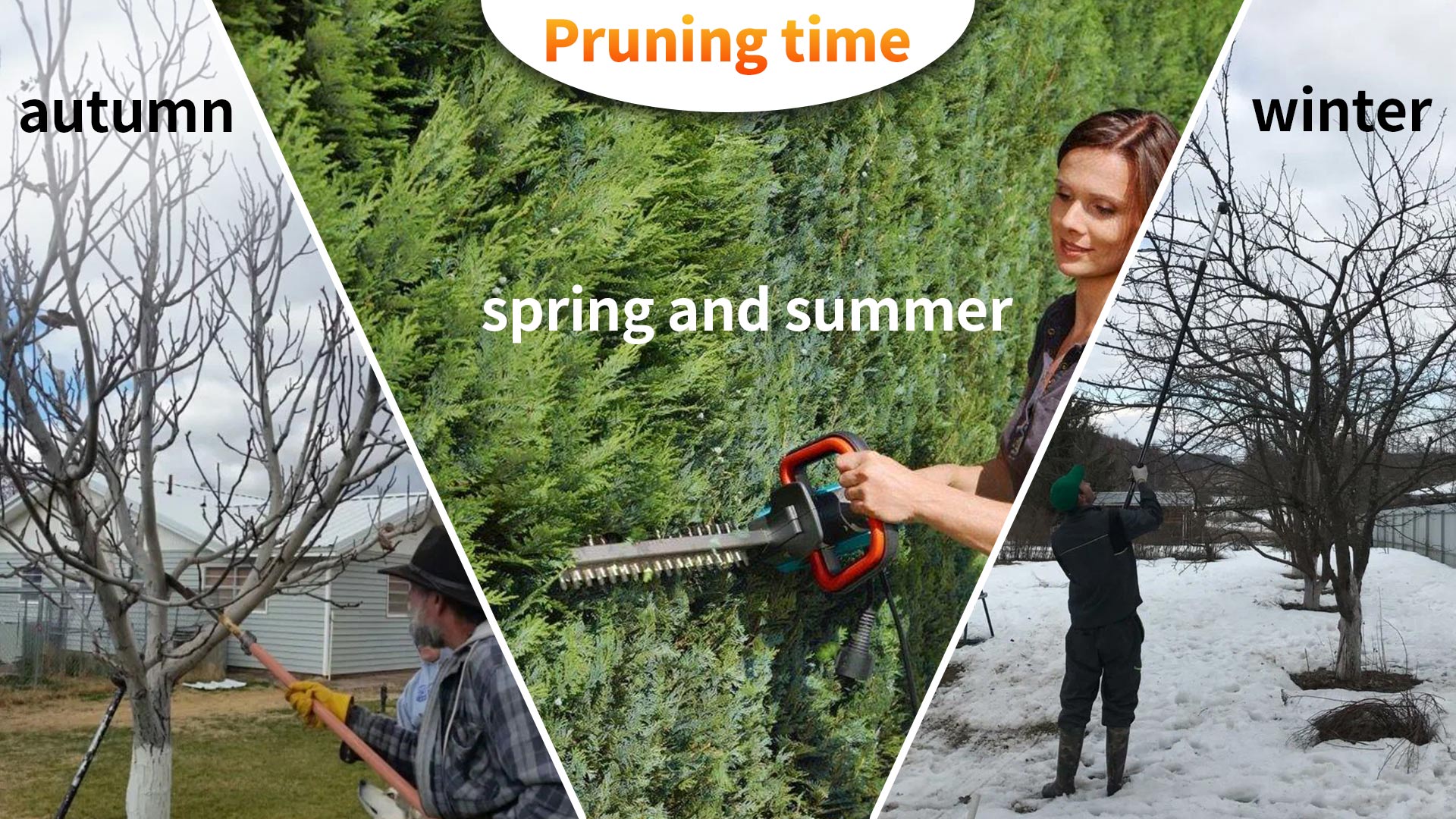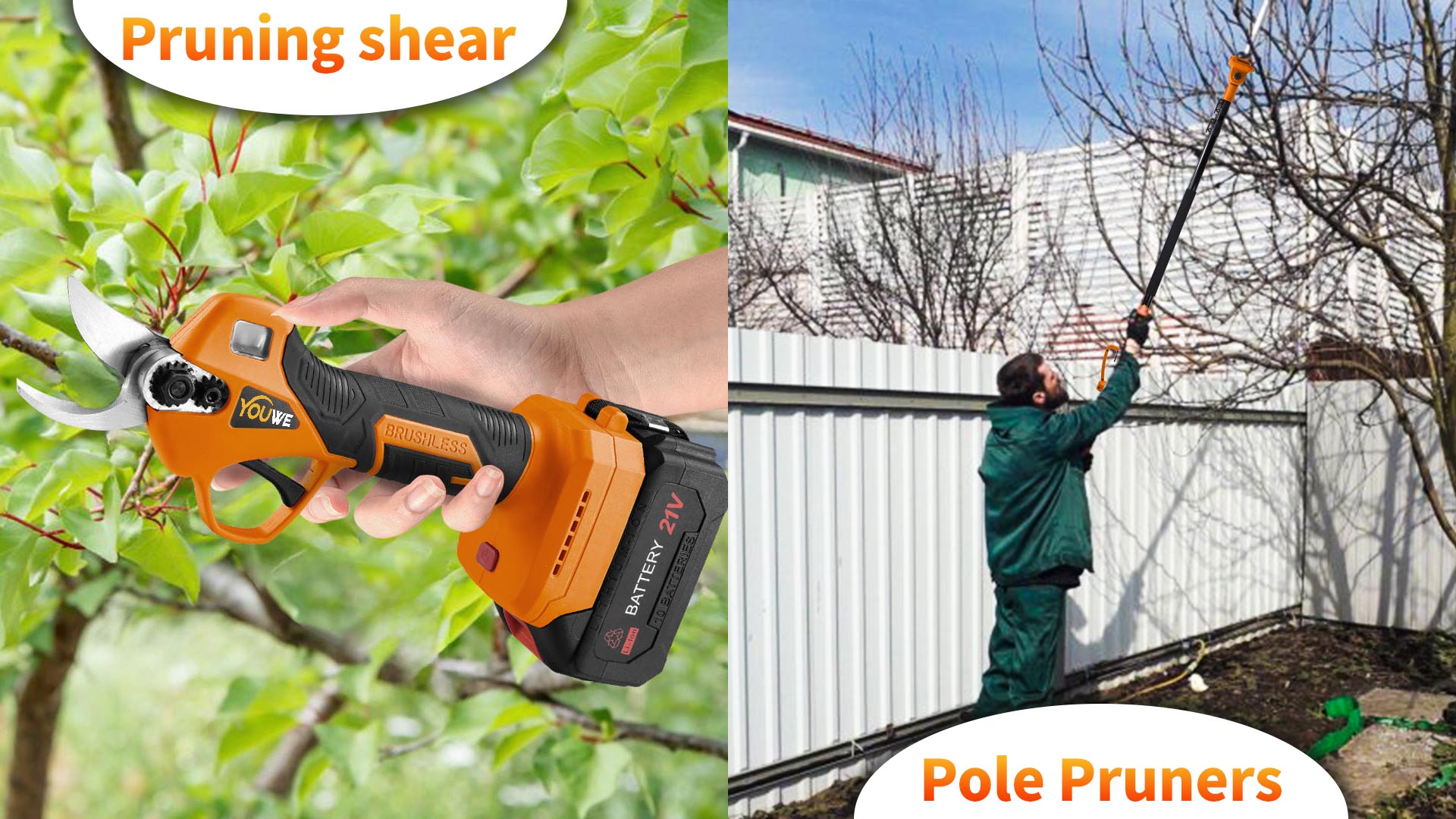Why Pruning Is Crucial for Healthy Trees
Pruning trees is a fundamental practice in maintaining not only the health of your trees but also their appearance and safety. Regular pruning promotes strong growth, improves air circulation, and allows sunlight to penetrate the inner branches. Removing dead or diseased limbs prevents decay from spreading, ensuring your trees live longer and remain structurally sound. It is essential to prune your trees correctly to avoid harming their natural shape or hindering their growth potential.
Best Time to Prune Trees: Timing Is Key
Timing is critical when pruning trees to minimize stress and maximize the benefits. Pruning at the wrong time can cause damage and expose trees to pests and diseases.
Here’s a breakdown of the ideal times to prune:

Winter Pruning
Winter is the best time to prune most trees, especially deciduous ones, as they are dormant. Pruning in winter helps minimize sap loss and reduces the risk of infection. The lack of foliage makes it easier to see the tree’s structure, allowing for more precise cuts.
Spring and Summer Pruning
Light pruning in late spring or early summer can be beneficial to control growth. Prune after the new growth has matured to remove excess branches that block light or rub against each other. This period is also ideal for pruning flowering trees, but only after they bloom.
Fall Pruning
Avoid pruning in the fall as it can stimulate new growth, which is particularly vulnerable to frost damage. The focus during this season should be on removing dead or hazardous branches that pose an immediate risk.
Essential Tools for Efficient Pruning
Using the right tools is crucial for making clean, healthy cuts that prevent damage. Here are the must-have tools for tree pruning:

-pruning shear: Best for branches between ¾ inch and 2 inches thick. The long handles give more leverage for precise cutting.
- Mini Chainsaw: For branches larger than 2 inches, a saw ensures a clean cut without damaging the bark.
- Pole Pruners: Extendable pole pruners are perfect for high branches without the need for a ladder.
- Chainsaws: For thick branches or dead wood removal, a chainsaw may be necessary, though these require extra caution.

Step-by-Step Guide to Pruning Trees
Pruning shear is not only about cutting branches but doing so in a way that ensures the health and structure of the tree. Follow these steps for optimal results:
1. Inspect the Tree
Begin by thoroughly examining the tree. Identify branches that are dead, diseased, damaged, or growing in unwanted directions.
2. Remove Dead, Diseased, or Damaged Branches
Cut back dead or dying branches to where healthy wood begins. Make sure the cuts are clean to avoid tearing the bark.
3. Target Crossing or Rubbing Branches
Branches that rub together can create wounds and expose the tree to disease. Remove the weaker or misdirected branch to reduce competition.
4. Shape the Canopy
Prune to open up the tree's canopy, allowing light and air to penetrate the inner branches. A well-shaped tree has fewer weak points and better overall growth.
5. Make Clean, Proper Cuts
Cut just outside the branch collar, the slightly swollen area where the branch connects to the trunk. Avoid cutting too close, as this can damage the tree’s healing process.
6. Seal Large Wounds (Optional)
If the branch cut is larger than 2 inches, applying a pruning sealer may help protect the wound from pests and diseases.
## Specific Pruning Techniques for Different Tree Types
Each tree species has unique needs when it comes to pruning. Here are guidelines for common tree types:
Fruit Trees
Pruning fruit trees is vital to improve fruit quality and control their size. Prune in late winter before the buds break to stimulate new growth and remove any branches that will block sunlight from ripening the fruit. Maintain an open shape for better airflow.
Evergreen Trees
Evergreens need minimal pruning. Focus on removing dead or damaged branches. Structural pruning should be done in early spring before new growth begins. Over-pruning can cause evergreens to become thin and weak.
Deciduous Trees
For deciduous trees like maple, oak, and birch, pruning should be done in late fall or winter when the trees are dormant. Remove weak, crossing, or downward-growing branches to ensure a strong structure.
Common Tree Pruning Mistakes to Avoid
While pruning offers many benefits, improper techniques can do more harm than good. Here are common mistakes to steer clear of:
- Over-Pruning: Cutting too much at once can shock the tree and lead to weak regrowth.
- Topping: Never cut off the top of a tree. This leads to poor structure and unsightly regrowth.
- Ignoring the Branch Collar: Cutting too close or too far from the branch collar can prevent proper healing.
- Using Dirty or Dull Tools: Always sterilize and sharpen tools to avoid spreading diseases and making jagged cuts that invite infection.
The Benefits of Regular Pruning
Consistent pruning provides a wealth of benefits to your trees and overall landscape:
- Increased Sunlight Penetration: An open canopy allows more sunlight to reach all parts of the tree, promoting stronger growth.
- Improved Air Circulation: This reduces the risk of fungal diseases by preventing moisture buildup.
- Enhanced Tree Structure: Proper pruning strengthens the tree’s structural integrity, making it more resistant to wind and storms.
- Aesthetics and Safety: Pruned trees not only look more attractive but are also safer, with fewer weak branches that could break in adverse weather conditions.
How to Prune for Maximum Tree Safety
When pruning trees, it's essential to prioritize safety, both for the tree and your property. Removing potentially hazardous branches is key to preventing damage from falling limbs.
By implementing a thoughtful and regular pruning schedule, you will not only enhance the beauty of your landscape but also ensure the long-term health and safety of your trees. Regular pruning strengthens your trees against storms, promotes healthy growth, and improves fruit yield in productive species. Invest the time in learning how to prune effectively, and your garden will reward you with strong, healthy, and beautiful trees for years to come.
We recommend this tool for your pruning work
Contact: Candy
Phone: 18869941430
E-mail: Inquiry@cnyouwe.com
Whatsapp:+86-18869941430
Add: Building 6 Mingyang Park,1389 Jinyuan Road,Chisong Town,Jinhua city,zhejiang